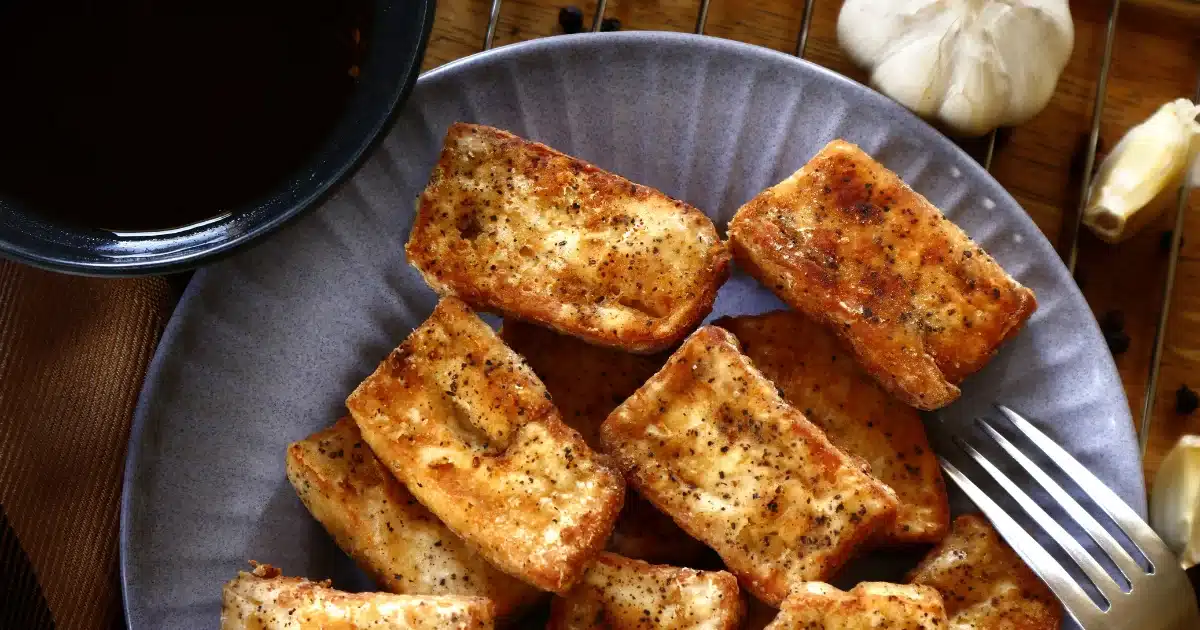RUNNING →
Level Up Your Nutrition Game With Our Freebies
Alex
I provide nutrition coaching for endurance athletes to improve performance and body composition through a simple and flexible eating style.
Hi, I'm
ATHLETE EATING GUIDE →
PROTEIN →
TRIATHLON →
RECIPES →
PERFORMANCE NUTRITION →
SUPPLEMENTS →
HOLIDAY & TRAVEL →
PLANT-BASED →
FEMALE ATHLETE NUTRITION
Explore the Blog
LEARN MORE →
ATHLETE GROCERY SHOPPING GUIDE →
RACE DAY: TRIATHLON NUTRITION PLANNER →
READY TO FUEL?
incredible value!
The fueling guide bundle serves as your one-stop-shop for strategies to fueling before, during and after your workouts.
ENDURANCE EATS
BINGE-WATCH READY!
YOUTUBE SERIES
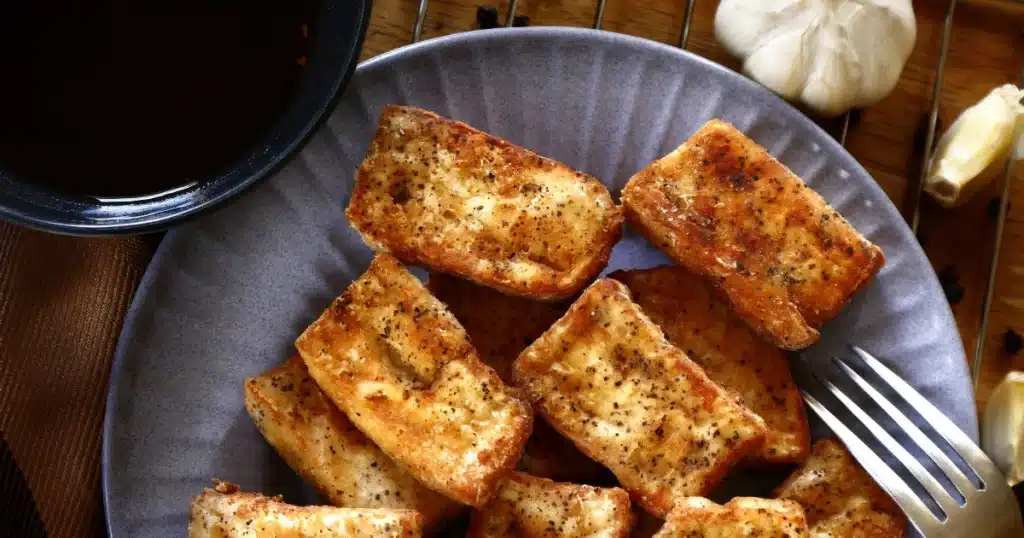
Learning how to cook protein alternatives as a plant-based athlete is important. Endurance athletes have unique nutrient needs, including an increase in protein. With more athletes becoming interested in meatless protein sources, being able to prepare them properly is key.
Are you curious about protein options like tofu and legumes, but just aren’t sure how to cook them? Don’t worry- you aren’t alone. I know there are many athletes that find themselves staring at a block of tofu and drawing a blank on how this could possibly taste good. But I do promise you that with the right preparation methods, protein alternatives can be delicious and a great way to get plant protein into your day.
What are Protein Alternatives?
Protein alternatives are protein substitutions that do not include meat and can be included in a variety of plant-focused diets. If you are a vegan or vegetarian who omits meat entirely, your protein intake will rely on protein alternatives. For the omnivores out there, protein alternatives can be a great addition to your diet to up your protein without increasing your meat intake.
Whether you’ve been feeling uninspired in the kitchen recently, or considering a few meatless meals a week, these easy recipes below are a great place to start.
For more information about plant-based protein options, check out our full article on plant protein!
Easy Ways to Cook Protein Alternatives

Soy
If plant proteins were the government, soy would be like the president. It is not only a very nutrient-dense protein option but it has also been shown to have other beneficial health implications.
Different types of soy products include:
- Tofu, tempeh, soy milk, edamame, soy nuts
Many people are intimated by cooking tofu and tempeh. But it honestly doesn’t need to be complicated! When it comes to tofu, it is important to pay attention to the differing firmness. Stores will typically sell silken, firm, and extra firm tofu blocks. The type you choose will depend on what you are making. I typically recommend beginners start with extra firm tofu because it has the least soft and “spongey” texture.
The other thing to keep in mind when cooking extra firm tofu is that it cooks best when the water is pressed out. The less water in the tofu, the more likely it will crisp up and give you a better texture. You can press the water out yourself or buy “pre-pressed” tofu blocks that contain less water.
Steps to easily press tofu yourself:
- Grab a plate. Set paper towels or a small kitchen towel on the plate. Add the block of tofu on top.
- Place another set of towels on top. Then add another plate.
- Find a small-sized heavy object to set on top of the plate. Ideas include a few cans of beans or a jar of pasta sauce.
- Wait around 15-20 minutes minimum and then you are good to go!
Crispy Baked Tofu:
This breaded tofu recipe is great because it can be used in so many different ways. Add these crispy nuggets or patties into a wrap, sandwich, or eat them plain and dipped in some sauce!
- Preheat the oven to 375 degrees.
- Press your extra firm tofu. Cut it into 2 in” cubes or 4″ strips, depending on your preference.
- Grab 3 small, shallow dishes.
- Place flour in the first.
- Crack two eggs in the next one and beat together. Add 2 tbsp of dijon mustard and mix.
- If you don’t eat eggs, you can use a powdered egg replacement and it works just as well!
- Place breadcrumbs in the last bowl. Add black pepper, garlic, and paprika.
- Dip your tofu nuggets into the flour, then the egg mixture. Make sure it is coated in a thin layer. Then place it in the breadcrumbs and toss until it is completely coated.
- Put all of the coated nuggets on a baking sheet and bake until crispy (roughly 20-25 minutes).
- Save any leftovers in an airtight container in the fridge.
Tempeh BLT:
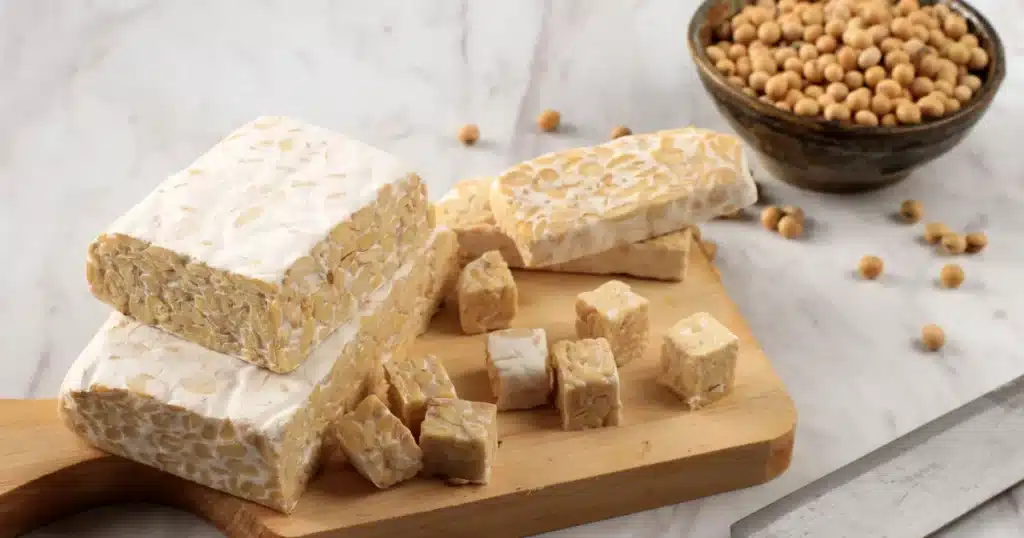
Tempeh is basically tofu’s long-distance cousin. It is made from fermenting soybeans and when cooked it has a crispy, nutty flavor. It works in many of the same meals that firm tofu does. Because of its shape and texture, many people turn tempeh into mock “bacon strips”. Here is a recipe for a simple tempeh BLT:
- Preheat oven to 400 degrees.
- Thinly slice your tempeh into long strips.
- In a shallow bowl or baking dish, mix together liquid smoke, tamari, maple syrup, salt, pepper, and smoked paprika. Make enough to cover the tempeh.
- Add the strips to the marinade and let sit for at least 10 minutes, flipping over halfway through.
- Take the strips out and transfer to the baking sheet. Pour any of the remaining marinade over top of the tempeh. Bake for 15-20 minutes, flipping halfway through.
- Grab your favorite bread and toast. Slice up a tomato and prepare your lettuce as necessary.
- Build your BLT with your tempeh bacon, lettuce, tomato, and bread.
- Save any leftovers in an airtight container in the fridge.
Legumes
Legumes are a family of plant foods that produce seed-bearing pods. These seeds can be dried and are then referred to as pulses. Legumes are a great plant protein source because they are high in several micronutrients including dietary fiber, zinc, magnesium, iron, and more.
Different types of legumes:
- Lentils, peas, chickpeas, beans (black, white, pinto, kidney), peanuts, green peas
You can buy legumes dried or canned. Dried varieties should be soaked overnight and then rinsed and cooked the following day. You can do this in a big batch and then freeze any extras to make later. Canned options are super convenient and can last in your pantry for a while. Simply rinse these before using and you are good to go! Keep reading for two simple ways to cook legumes.
Bonus tip: While legumes are not a complete protein source, if you pair them with a grain, they make a complementary protein and contain all 9 amino acids.
Lentil Bolognese Pasta:
One of my favorite ways to use lentils is to swap them for ground beef in a traditional bolognese pasta sauce. This is a dinner that the whole family can enjoy!
- If you are using dry lentils, soak as explained above and then steam. To steam, simmer in a covered pot of boiling water on the stove for 20-30 minutes. Drain. You can also use pre-steamed or canned lentils.
- Cook pasta of your choice, strain, and set aside.
- In a separate pan, pour a jar of your favorite spaghetti sauce.
- Try out my fav homemade spaghetti sauce recipe
- Add your lentils to the sauce. Combine together and simmer for 5-6 minutes.
- Place your cooked pasta in the dish. Top with your lentil and sauce mixture. Add toppings of your choice including cheese, fresh herbs, and other vegetables such as sauteed leafy greens.
Slow Cooker 3-Bean Soup
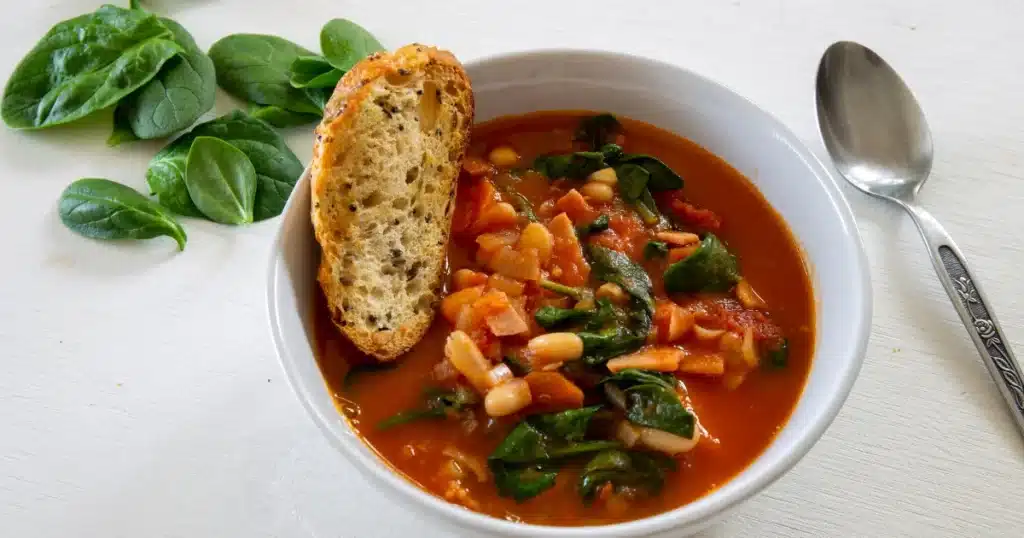
You can’t get any easier than a slow cooker meal. This 3 bean soup is full of nutritious legumes and can be made in large batches and frozen for later.
- Cook your dried beans accordingly or grab 3 canned options of white, pinto, and kidney beans.
- Add them into your slow cooker along with a can of crushed tomatoes and 4-6 cups of vegetable broth.
- Chop 4-5 carrots, 1 stalk of celery, 1 bunch of spinach, and 1 yellow onion. Add to slow cooker.
- Top off with a few cups of water. Add salt, pepper, parsley, minced garlic, and 2 tbsp of oil. Feel free to toss in any other spices or vegetables you enjoy.
- Cook and leave on low heat for 4-6 hours. Freeze any extra in air-tight containers to reheat later.
Fish & Seafood
While not every plant-focused diet includes seafood, it can be a great meat alternative for those that do choose to eat it. Fish is very nutrient-dense, containing important nutrients for athletes like omega-3 fatty acids and iron. A diet that excludes meat but eats seafood is considered a pescatarian diet.
Some people don’t like seafood because of the “fishy” taste it can have. But, if you cook it with the right spices or use a marinade, you would be surprised how tasty it can be! Here are two easy ways to cook fish and seafood. If it’s a texture issue, I suggest trying an ahi-tuna steak (I buy when on sale in the frozen section to supermarket) as the texture and flavor is one of my absolute favs!
Sheet Pan Teriyaki Salmon:
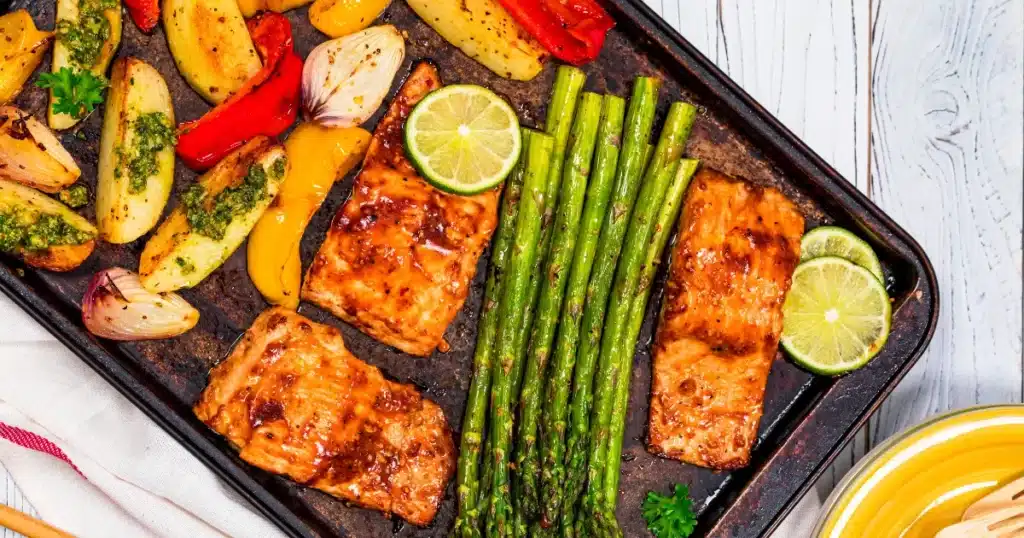
Using a sheet pan and baking fish in the oven is simple and requires minimal cleanup. Follow this easy recipe below.
- Preheat oven to 400 degrees. Grab a sheet pan and line with foil. Grease the sheet pan with oil or spray.
- Take your pieces of thawed salmon and place them in a container. Sprinkle salt and pepper on both sides. Cover with your favorite teriyaki sauce. (You can do this the night before and let it marinate for even more flavor!)
- Place the salmon on the sheet pan. Add your favorite veg around the outside of the sheet pan. Ideas include broccoli, carrots, and zucchini.
- Bake for 12-14 minutes or until your salmon reaches 165 degrees minimum. Serve immediately with a side of brown or white rice. Add shelled edamame for an extra boost of plant protein.
Shrimp & Slaw Tacos:
Fish or seafood tacos are another great way to easily cook these protein alternatives. For today’s recipe, I highlighted shrimp because it often gets overlooked and is a great lean protein source. You can add in whatever ingredients you have on hand, but I recommend pairing them with a yummy coleslaw.
- Place your medium or large shrimp in a bowl. Cover with salt, pepper, and garlic and shake to coat.
- Heat a saute pan on medium heat with 1 tbsp of olive oil. Add in your shrimp and saute on medium heat. They should only take a few minutes per side. You can tell they are done when they are white inside with some pink on the outside.
- Toast a few tortillas of your choice in a pan. Corn and flour are both great options.
- The brand Siete makes an almond flour tortilla with 6/g protein per 2 tortillas.
- In a small bowl, combine your cabbage with red onion, cilantro, lime juice, and mayo or sour cream.
- Grab your tortillas and fill with the shrimp and slaw. Top with any other toppings of your choice.
- For another protein boost, create a sauce with a greek-yogurt base and add on top.
Looking for more plant-based nutrition content? We have a full blog post that goes over everything you need to know as a plant-based athlete!
Protein Alternatives for Plant-based Athletes: The Takeaway
Cooking protein alternatives can be a fun and creative way to switch up your current meals. Try out a few of these tips and tricks and don’t forget to save these recipes for later when you need meal inspiration!
Optimizing a plant-based diet for performance can take a bit of extra thought and planning. Working with a sports dietitian can help you create a personalized plan that fits your unique nutrition needs. Check out our nutrition services page to learn more about our 1:1 premium coaching for endurance athletes. Spots fill up fast so make sure to reach out today!
Alex
I provide nutrition coaching for endurance athletes to improve performance and body composition through a simple and flexible eating style.
Hi, I'm
LEARN MORE →
take the quiz!
Let's discover your Endurance Nutrition IQ
How well do you know your fueling? Answer these questions and let's see where your endurance nutrition knowledge is at!
Take the quiz
level up your nutrition game with these freebies
free downloadS
Protein-Packed 10-Day Sample Meal Plan
Athlete Eating Guide
Athlete Grocery Shopping Guide
1
2
3
Inspiration to fit 120 grams of protein into your day
Planning what goes on your plate
Putting the right foods in your grocery cart
